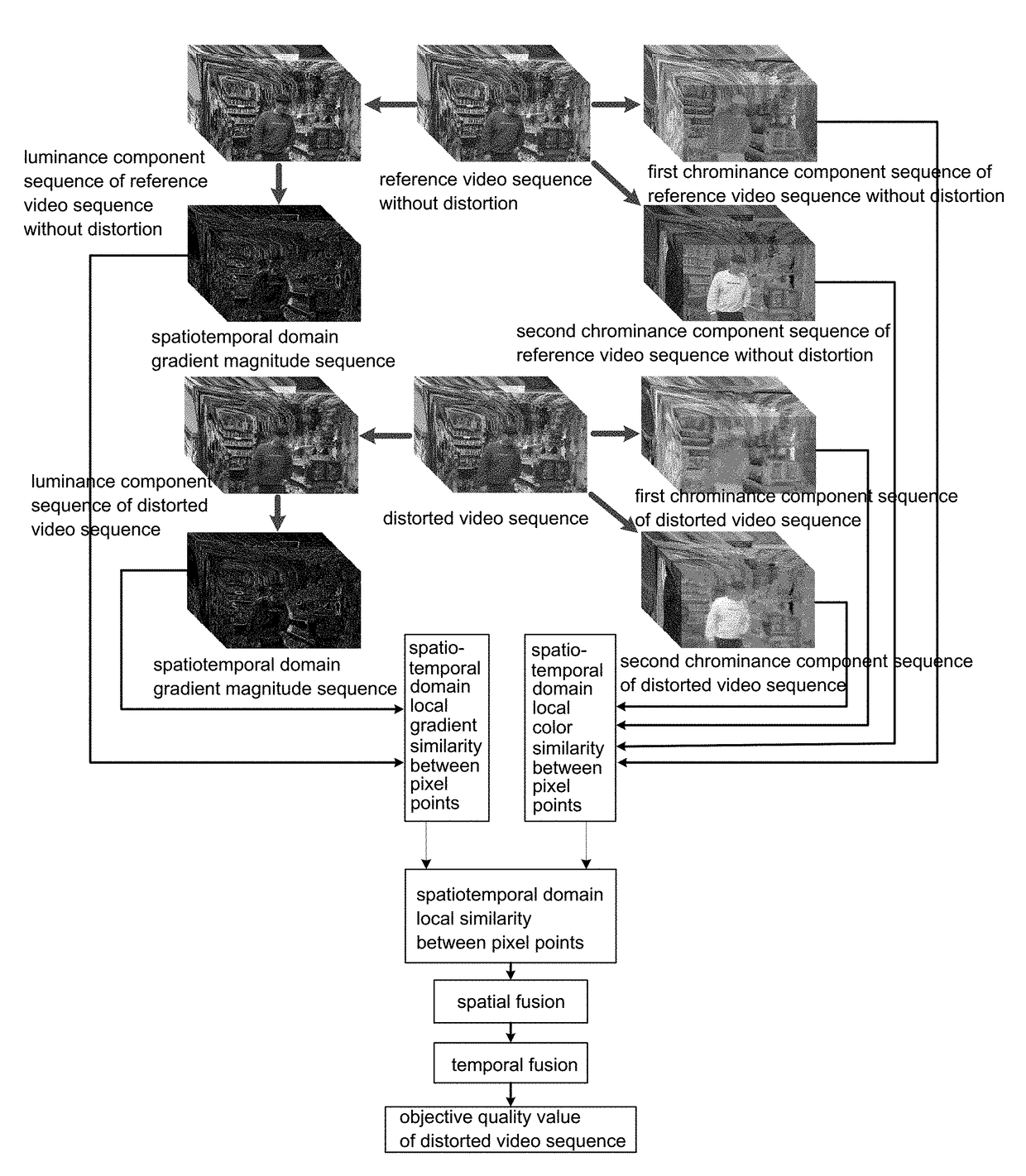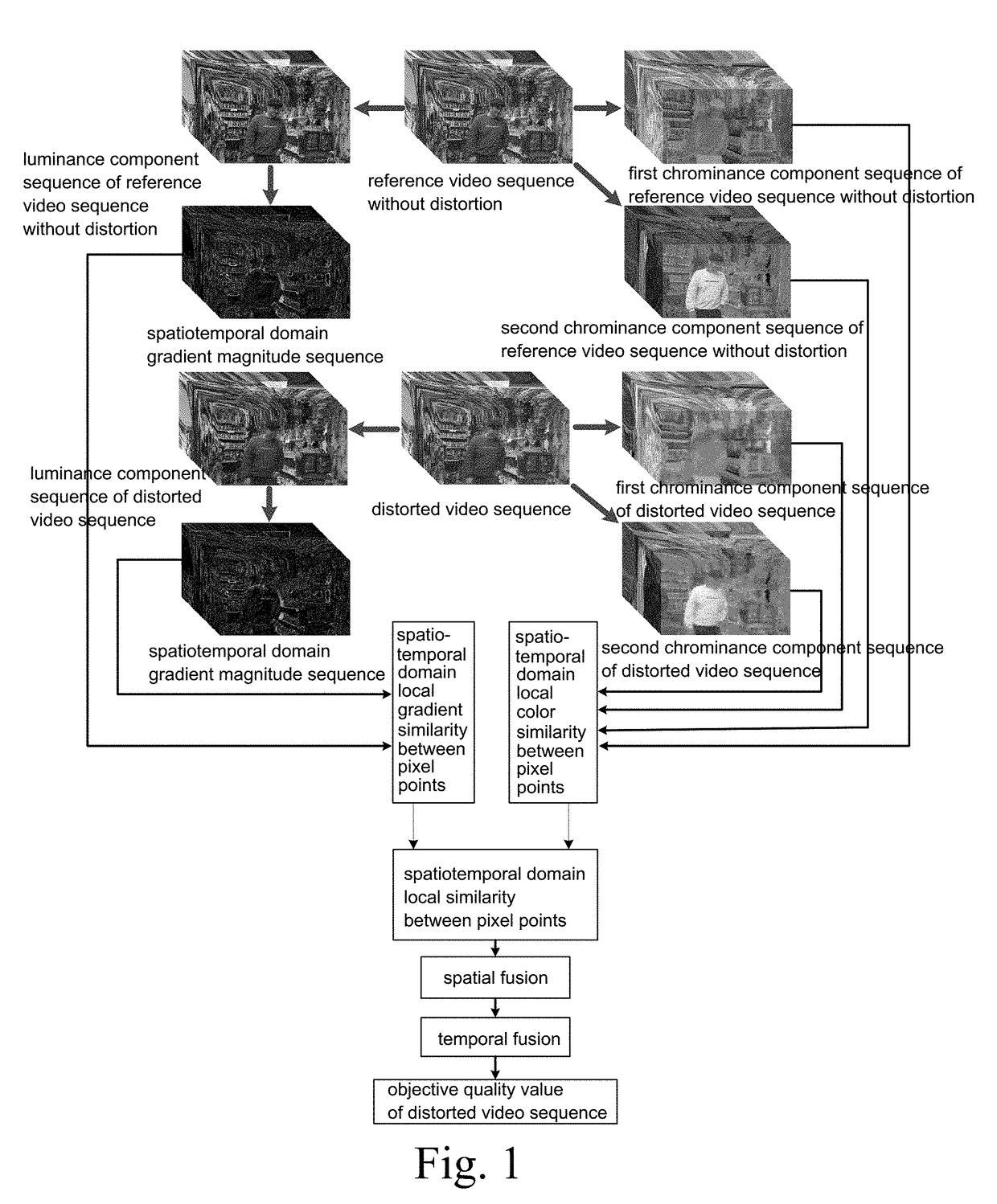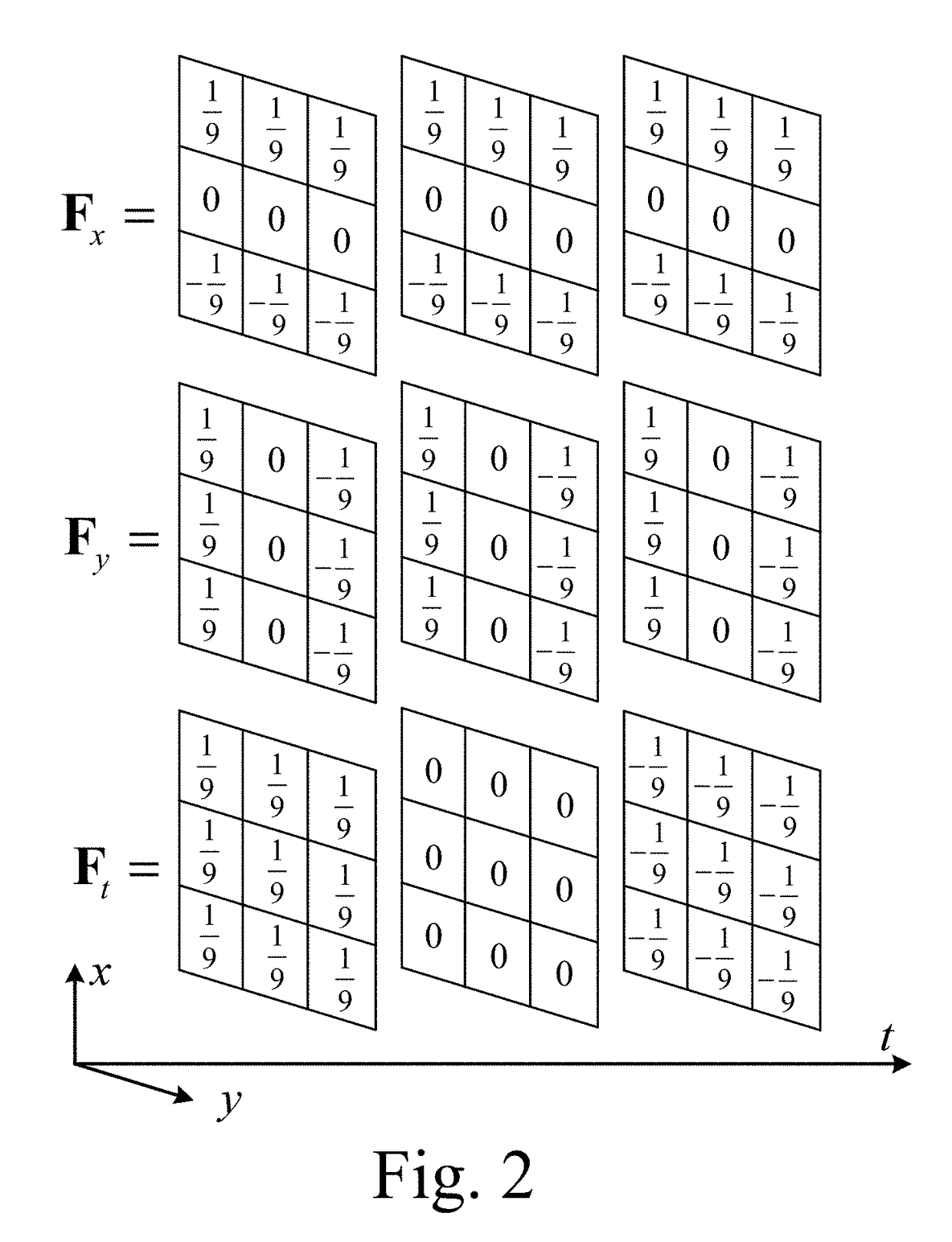Video quality objective assessment method based on spatiotemporal domain structure
a spatiotemporal domain and objective assessment technology, applied in the field of video quality objective assessment method based on spatiotemporal domain structure, can solve the problems of low consistency between the peak signal-to-noise ratio and subjective quality perception, impeding the progress of video processing technology, especially the progress of video compression efficiency, etc., to achieve the effect of improving relativity and reducing calculation complexity
- Summary
- Abstract
- Description
- Claims
- Application Information
AI Technical Summary
Benefits of technology
Problems solved by technology
Method used
Image
Examples
Embodiment Construction
[0035]Referring to drawings and a preferred embodiment, the present invention is further illustrated.
[0036]Outstanding full-reference video quality assessment methods not only are highly accurate in prediction and sensitive to both spatial and temporal distortions, but also lower a computational complexity as much as possible and provide real-time processing of video sequences. The present invention combines a spatiotemporal domain gradient magnitude and color information for calculating a spatiotemporal domain local similarity, and then treats a whole video sequence as a dynamic temporal sequence. Firstly, frame-level objective quality value of each frame is obtained by variance fusion, then a temporal domain fusion model is established by simulating three important global temporal effects, which are a smoothing effect, an asymmetric track effects and a recency effect, of a human visual system, so as to obtain objective quality values of a distorted video sequence. Bottom feature c...
PUM
 Login to View More
Login to View More Abstract
Description
Claims
Application Information
 Login to View More
Login to View More - R&D
- Intellectual Property
- Life Sciences
- Materials
- Tech Scout
- Unparalleled Data Quality
- Higher Quality Content
- 60% Fewer Hallucinations
Browse by: Latest US Patents, China's latest patents, Technical Efficacy Thesaurus, Application Domain, Technology Topic, Popular Technical Reports.
© 2025 PatSnap. All rights reserved.Legal|Privacy policy|Modern Slavery Act Transparency Statement|Sitemap|About US| Contact US: help@patsnap.com



